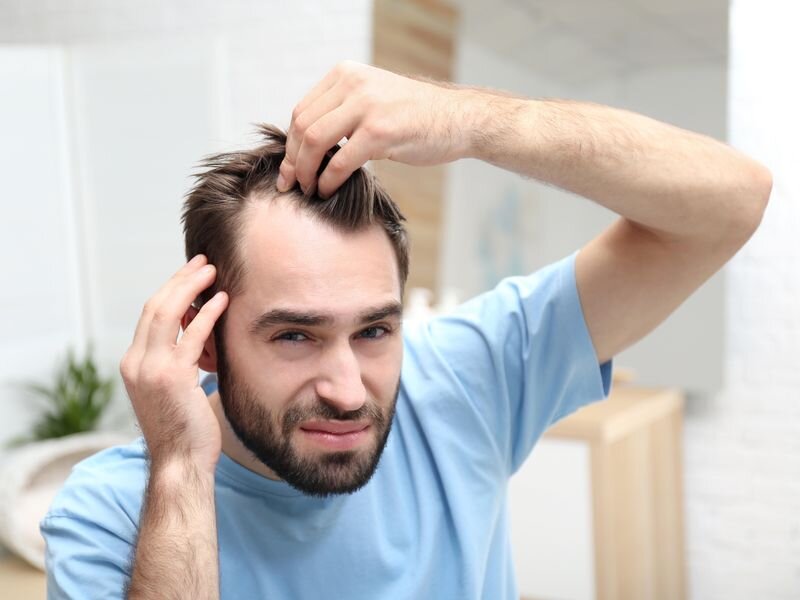Receding hairline or bare areas on the back of the head: Many men find it stressful when their hair is thinning. What can those affected do? Here are some expert and doctors opinion and strategies for men to manage and deal with this this heredity baldness.
Some people still have a full head of hair in their 50s, while others noticeably thin it out in their early 20s. Hair growth on a man’s head depends primarily on his disposition. If a bald spot forms on the back of the head or the hair around the forehead becomes thinner and a receding hairline appears, this is called hereditary hair loss. It is impossible to predict medically who will be affected, when, how severely and in which areas. So men should manage to take care before the bald patch appears on one’s head because it is very costly and difficult to gain back that hair line. One should know about some strategies to combat this lose, so that he can prevent it before its too long.
Look into the ancestral gallery
A look at your ancestors can provide a clue: What was it like for your father and grandfather? The maternal grandfather in particular is believed to play a major role in the inheritance of hereditary hair loss.
“The clearer the picture is, the more clearly I can conclude what to expect,” says Schwichtenberg. You don’t necessarily have to plunge into despair if only bald heads adorn the ancestral gallery. “The genes combine and this condition does not always develop,” explains Andreas Finner, a specialist in dermatology and hair surgeon from Berlin .
Early detection can provide clues
But if you are worried because of your family history, Finner believes that early detection at the hair consultation is recommended. There the hair is examined very carefully – early signs of hair loss can also be seen.
This is often not visible in the mirror. As soon as significant hair loss can be seen with the naked eye, a lot has already happened without being noticed. “In this situation, treatment is of course more difficult,” says Finner. “The sooner you recognize it, the better.” It may be possible to counteract this with medication – and there are other options.
Don’t underestimate psychological stress
For some men, hair loss begins before the age of twenty, for others only later, and some are completely spared. “The frequency is difficult to determine,” says Finner. It is estimated, he explains, that by the age of 25, around one in four people have visible hair loss, and by the age of 50, more than half. Of course, this also depends on what you define as visible hair loss.
Regardless of this, everyone affected deals with it differently. While one person takes it easy, the other suffers massively – one should not underestimate the influence of hair loss on the psyche. “For many men, especially at a young age, hair loss is very stressful, but they often don’t talk about it,” says Finner. Sometimes partners or friends cannot understand the problem and instead trivialize it.
Finner advises taking the emotional toll of hair loss on men seriously. “Some of my patients still suffer years later from a comment made in a funny tone about their increasing baldness.”
Lost hair doesn’t come back
An important point that men who want to take countermeasures should keep in mind: “With therapy you can only preserve what is still there,” says Uwe Schwichtenberg. This means: “You can’t get back lost hair.”
Still, if you decide to give it a try, you should start as early as possible – and then stick with it if the medication works as hoped. Because you have to expect that hair loss will start again to a large extent after you stop using these products. Schwichtenberg estimates that it takes about a year until the man’s head looks the way it would have looked without any therapy.
Hair transplant only under certain conditions
A more permanent, but at the same time more complex, way to achieve fuller head hair is hair transplantation. But in order for it to be considered, various requirements must be met. On the one hand, there have to be really visible gaps or bald spots, explains dermatologist and hair surgeon Andreas Finner. On the other hand, there must be enough donor hair on the back of the head.
Also read about our article about the essential nutrients to prevent hair loss.


